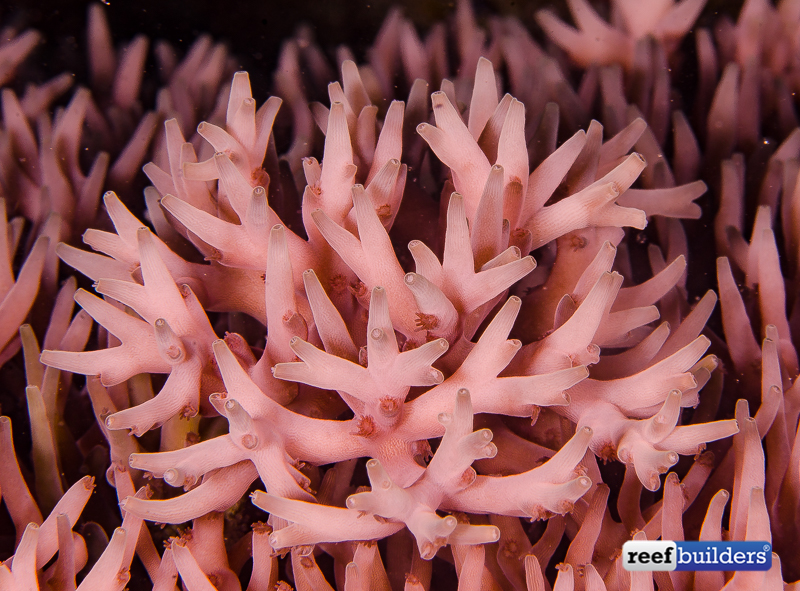Acropora jacquelineae is a very recognizable species of deepwater or smooth skinned Acro. It is relatively easy to keep, but until now if you wanted to try your hand at growing the unique shape of Acropora jacquelineae you had to be content with enjoying it in a shade of light brown or grey.
Once again, our travels off the beaten path and outside the regular areas of collection for marine aquariums has revealed a new, previously unknown color form of an Acro species. We sighted this cotton-candy pink Acropora jacquelineae in Raja Ampat Indonesia, in a very similar reef environment as the Cenderawasih Butterflyfish we shared with you yesterday.

The pink Acropora jacquelineae pictured here is the first of three, but by far the largest and brightest pink ‘Jacquie’ that we observed in Raja Ampat, Each time we sighted a pink A. jacquelineae it was at a moderate depth on a gradual reef slope, pretty close to shore where the water is not so clear and water currents are fairly mild.
The moment we spotted the pink A. jacquelineae we were immediately reminded of the red Acropora suharsonoi from our previous travels in Indonesia. In fact A. jacquelineae shares some similarities in appearance with Suharsonoi Acro, notably the smooth and elongated axial corallites which dominate the appearance and growth form of A. jacquelineae.

The specific pink coloration of the Jacquie Acro was noticeable under the ambient blue light in which it grew, but the shade of rose really popped under our video and strobe lights; it’s the type of pastel pink color which responds extremely well to warm lighting from T5 fluorescent lamps. We imagine that the pink Jacquie Acro would look incredibly nice in an SPS aquarium, especially the likes of which aim for probiotic conditions and very low nutrients that really bring out the chromatic pigments of stony corals.
To date we’ve never seen a pink A. jacquelineae available to the aquarium hobby, but Corals of the World does mention this species coming in a pinkish color so there’s hope that this color form is not rare. And with a fairly broad natural range, it’s possible we may one day see this color form become available from a different part of Indonesia, Papua New Guinea or the Solomon Islands.




